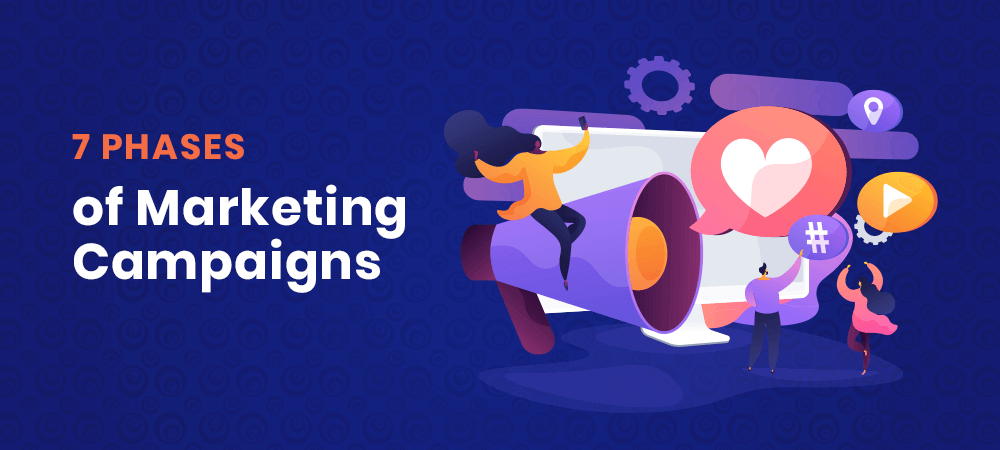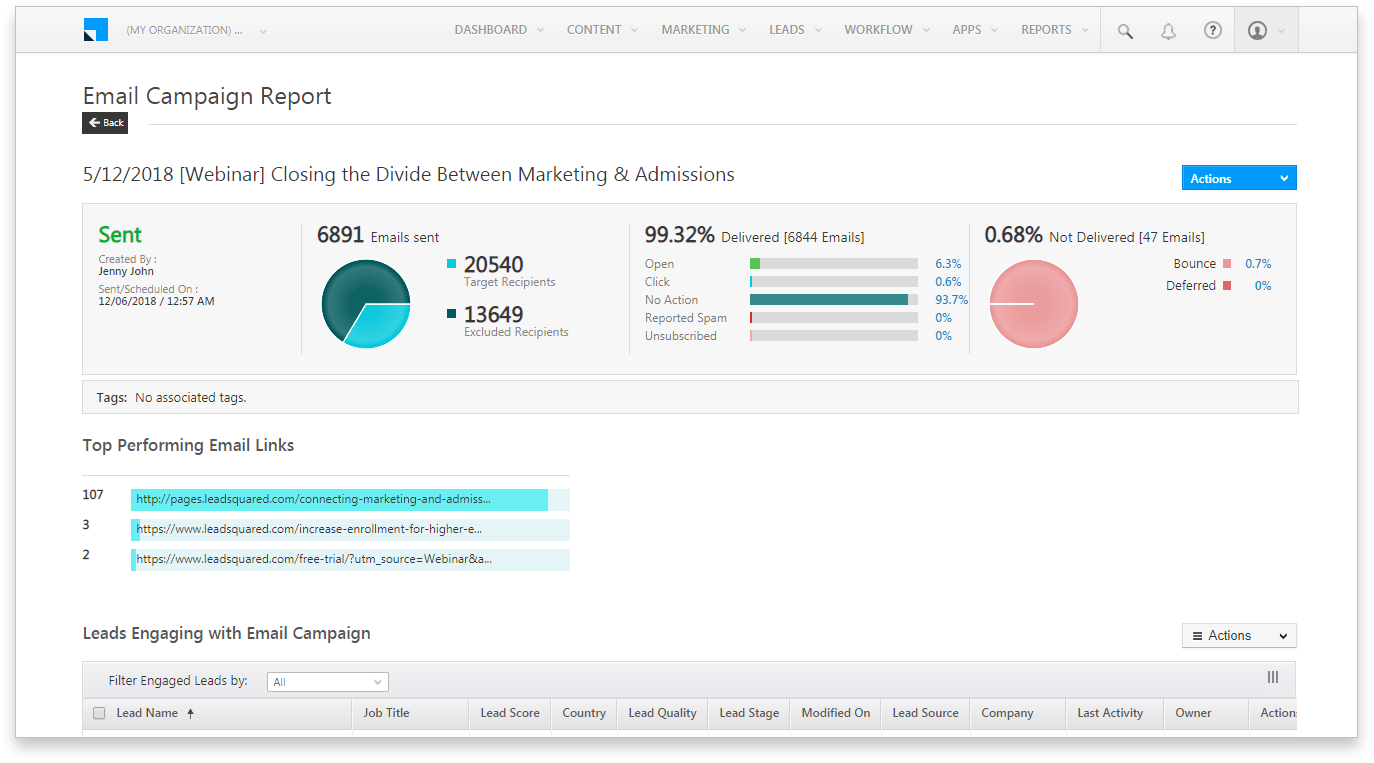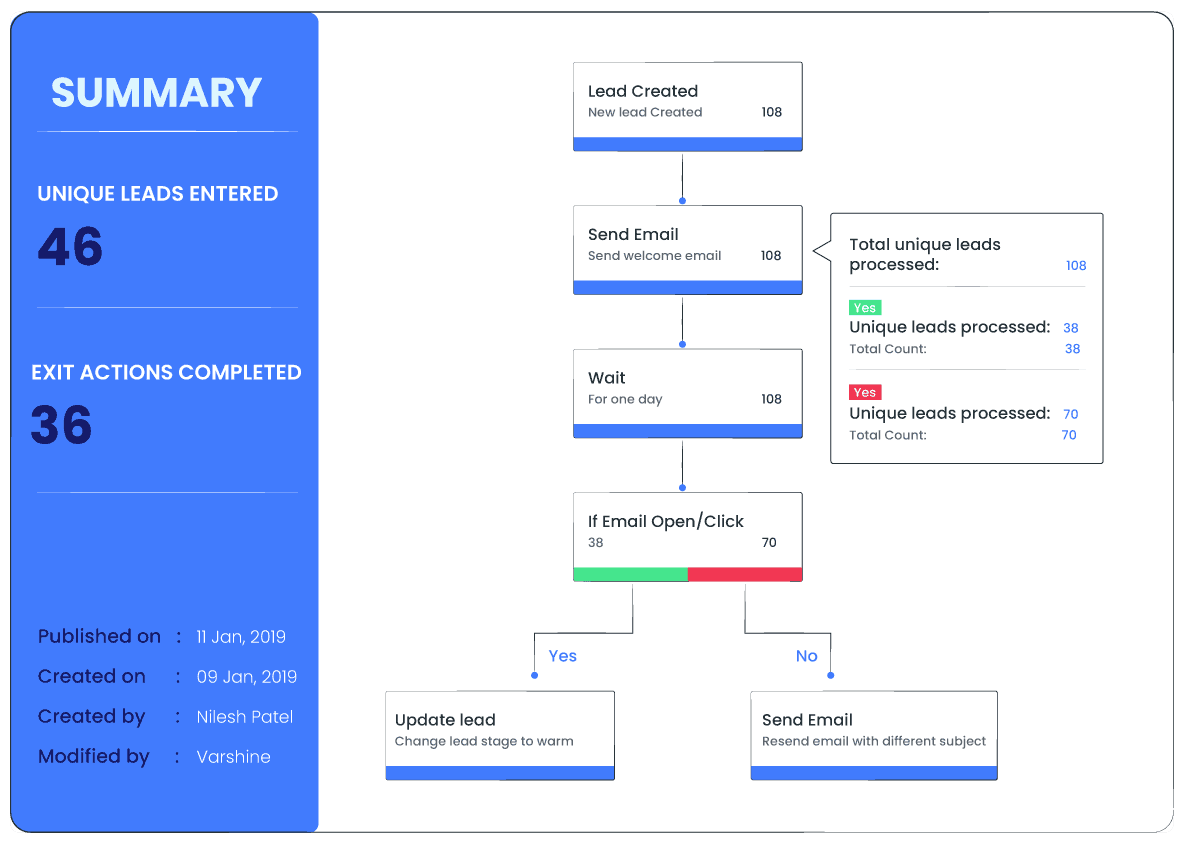In this article, we will talk about the crucial marketing campaign phases. We will also see how a thoughtful approach can lead to the success of your campaigns. But first, let us understand why this is important.

In 2001, Polaroid went bankrupt as new cameras and smartphones changed the photography landscape. Even after being resurrected for a short while and going through six CEO changes, it became bankrupt again in 2008. Finally, some enthusiasts reincarnated the brand with Lady Gaga as its creative director (2010). The brand started targeting millennials with their new campaigns as it introduced new products with 21st-century tweaks.
Old Spice also had a similar story. There, they failed to make their products desirable to the younger generation. Its parent company, Procter & Gamble, had to rebrand multiple products. They commissioned multiple viral marketing campaigns that helped it regain its market share.
Apple also became nearly bankrupt in the 80s as it was losing to HP, IBM, and Dell. That is when they launched the ‘Think Different‘ campaign. This marketing drive challenged customers to see Apple products as a lifestyle choice and not a generic computer product. Fortunately, it worked out for the company.
What do we learn from these brand stories?
That, an effective marketing campaign requires a lot of planning and improvisations along the way.
Also, campaign goals may vary depending on your business strategy and growth plan. For instance, there may be campaigns to launch a new product or a service, increase user engagement, improve brand visibility, and more.
A well-executed campaign will result in a lot of leads and customers. But without a proper plan, a campaign will be both a waste of time and money. Furthermore, a poorly executed campaign can be detrimental to the brand image.
Without further ado, let us dive into the crucial marketing campaign phases and how you can leverage them to create a lasting impression.

7 Important marketing campaign phases
Marketing campaigns are, in general, complex. They require extensive planning and a lot of thought. Also, brands must know their audience well and see that they do not misinterpret their marketing drive.
For instance, Sony’s marketing campaign backfired when people perceived racist undertones in one of their campaigns. Their ‘White is Coming‘ campaign for introducing the white PlayStation portable was not well received by the audience.
It indicates that campaigns are not just about brand awareness, impressions, and engagement. It should also convey the brand message effectively.
Here are seven distinct phases of marketing campaigns that you must master for success. It will help you drive better results from your campaigns.
#1 Research and Set Goals
The first step to building a campaign is understanding how the customer will relate to the campaign. It means that brands must understand the pain points of the customer. No matter how witty a campaign is, it would be of no use unless it solves a customer problem.
Most businesses do not have any fixed ideation process while planning a campaign. Before researching ideas, you must keep these factors in mind:
- Figure out how the audience will receive them. It will help you understand if your marketing efforts will be successful or not.
- For small and medium-sized businesses, the budget is an inherent concern. Yet, planning it from the beginning will help you determine the scope.
- People with experience in the field will always be able to communicate better with the target audience. That is why brands seek expert professionals. Once you have understood your capacity, you can start with researching for the campaign. Include the following data in your research:
- Customer demographics and pain points
- Market size
- Current trends
- Competitor analysis
Finally, you will also need to determine the success metrics for your campaign. According to a survey by CoSchedule, 70% of marketers set goals for a marketing drive, and 81% of them achieve their set goals.
Also, set SMART goals – Specific, Measurable, Actionable, Realistic, and Time-bound. Examples of such SMART goals include:
- Find more leads
- Drive more referral or organic traffic
- Increase brand awareness
- Get more email subscribers, social media engagement
- Increase brand awareness, enter a new market
Prepare a timeline for your campaign activities and achieve these goals within a fixed timeframe.
#2 Define the Target Audience
The next important marketing campaign phase is identifying your target audience. It is not possible to address everyone with a single marketing campaign. You will have to select a specific customer segment and address them. To know your customer better, you need to create a customer persona. Then tailor your messages in a way that resonates with their problems, needs, and expectations. Include the following details in the audience persona:
- Demographics such as age, gender, location
- A professional profile such as Job, position, and income
- Family status, household income
- Hobbies, interests, social preferences
- Their challenges
The more detailed the buyer persona is, the better. You can also create buyer personas from ideal customers that your company had in the past.
#3 Dry Run (Or Test the Campaign)
28% of the salespeople think that the marketing strategy of their brand is not efficient. So, test your campaigns with internal teams as well. It is also the easiest way out there because the team members can also be a part of your target audience.
Let us take an example.
Your campaign goal is to generate leads. You have decided to create a landing page as a part of the campaign. A landing page is a low-cost way to test how your campaign message resonates with the target audience.
But why will anyone share their details?
They will if they receive something of value in exchange.
So, you can offer an eBook, whitepaper, report, etc., and test which one brought more leads.
Here are a few things to keep in mind while creating a landing page.
- Show only one offer: Keeping it minimal will reduce confusion.
- Skip the navigation: A single page is enough. You can remove the navigation bar to ensure that users do not get distracted.
- Avoid links to other pages: Avoid keeping links that will lead visitors away from your webpage.
- Optimize it for mobile: You see, everything is mobile-friendly these days. So should be your landing pages.
- Finally, keep a clear call to action. The CTA can be a single button or link in the middle that says subscribe, request a demo, pre-order, download eBook, or register for a webinar.
Next, include the CTA on supporting assets of your campaign. For example, put it on blog posts, social media posts, or even newspaper advertisements.
Also, gate your valuable content – use landing pages to collect data about potential consumers from your high-value offers. For instance, if you offer a free eBook, you can use a form to collect data about the visitor (name, email, job profile, company, etc.) before you make the eBook available for download.
#4 Distribute and Promote
While the above marketing campaign phases focused on planning, distribution and promotion depicts the progress towards execution.
There are countless options to choose from when selecting content distribution channels. However, prioritize the distribution channels based on buyer persona. If you are selling a B2B product or a service, LinkedIn or Facebook is a good option. If you are marketing to teenagers or entrepreneurs, then Snapchat or Instagram is a reasonable choice.
Also, use social ads until you build up your organic audience base. It will help you promote your product/service to a wide range of audiences.
#5 Track Performance
Do not wait till the end to see the campaign performance. Keep measuring the campaign performance while it is still running. It will help you evaluate your campaign and its reception from your target audience. Accordingly, you can make changes – before it is too late.
For this, you will have to set up goal tracking. For blog posts, media downloads, the number of views is generally enough, and for others, you can use CRM software for campaign management. It will help you in the following ways:
- Simultaneously plan and execute different campaigns across different channels
- Track the campaign performance
- Modify the content, creatives, and understand spent from a single place
- Leverage drip marketing
- Effectively track the sources of leads
- Manage and nurture your leads from the same platform
- Sync with the sales department for follow-ups
- Integrate with relevant third-party applications
- Generate daily, weekly, or monthly reports automatically as per your requirements.

#6 Nurture Leads
Not all leads you generate from the campaigns will be sales ready. To turn a marketing lead into a sales-qualified lead (SQL), you will have to nurture them. Fortunately, you can automate a large part of this process.
Here is an example.
A prospective buyer happens to visit your website and subscribes to your promotional offers email. At this stage, the lead is only a marketing lead. To convert them into SQL, you will have to send them discount offer emails and other emails such as product launches, seasonal offers, etc.
Now, remembering which prospect signed-up for what activity is impossible. Even spreadsheets cannot help here much. So, you need an email automation software through which you can contact the leads automatically. Also, you need not specify their interest explicitly. The automation software can do this for you on its own.

#7 Build Customer Relationships
It is crucial to keep in touch with the customers and gather their feedback. Even during the campaign, the customer can provide feedback. The brand must take this feedback and incorporate them into their products or services. Collecting the feedback will ensure that the brand cares about the customers.
You can also use CRM software with a marketing automation suite to build stronger relationships with customers. It can help you with the following:
- Capture leads along with their details from many different sources
- Understand their intent with behavior, activity, and social tracking
- Spot activity signals and trigger engagement actions
- Visualize user journeys
- Send relevant content to individual users instead of blasting a generic email
- Measure campaign performance across channels and take corrective actions immediately
- Integrate with other internal and third-party software to get a holistic view of customers from one place.
Final Thoughts
To survive this tough competition, planning is essential. Focusing on the above marketing campaign phases will allow you to create timely, authentic, and persuasive plans. Moreover, dividing your campaign into phases will help you focus on explicit things, which often gets overlooked when you see it as a whole.
There is no doubt that marketing campaigns have been changing the course of brands for ages. What we usually see is a success, but a lot of preparations, iterations and failures are behind that.
Fortunately, today, we have software to streamline marketing across channels.
If you want to make the most out of your campaigns, take a look at the LeadSquared Marketing Automation suite once. Book a Demo!








